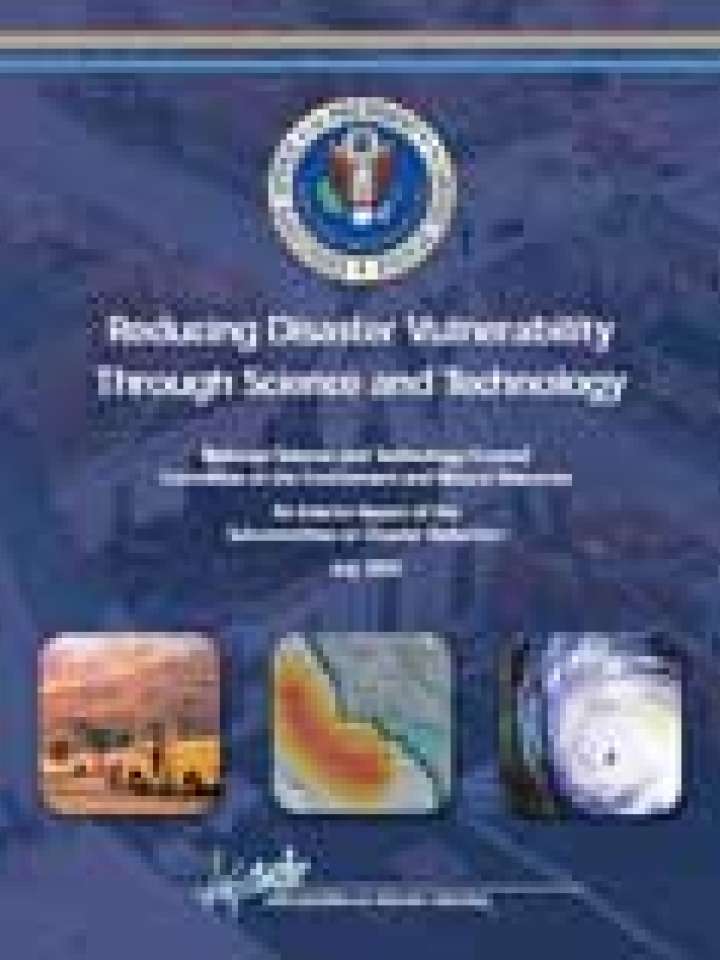Reducing disaster vulnerability through science and technology
This report's purpose is to provide an overview of the hazard risks facing the nation, identify the common links between technological and natural hazard risk reduction, review the U.S. Government’s current efforts to increase the nation’s disaster resiliency through research and implementation of new tools and technologies, and identify issues and opportunities for the future.
The member agencies of the SDR have begun a comprehensive effort to develop a long-term science and technology strategy for reducing disaster vulnerability, as discussed in Section I. Section II of this report reviews the risks and costs associated with: Extreme weather events, including hurricanes, flooding,
tornadoes, and drought; Wildfires; Earthquakes, volcanoes, and landslides; Disease epidemics; Technological disasters, including critical infrastructure
threats, oil and chemical spills, and building fires. Current interagency and nationwide efforts to address these gaps are summarized in Section III of this report. Section IV identifies nationwide programs and international initiatives to reduce disaster vulnerability.
Explore further
